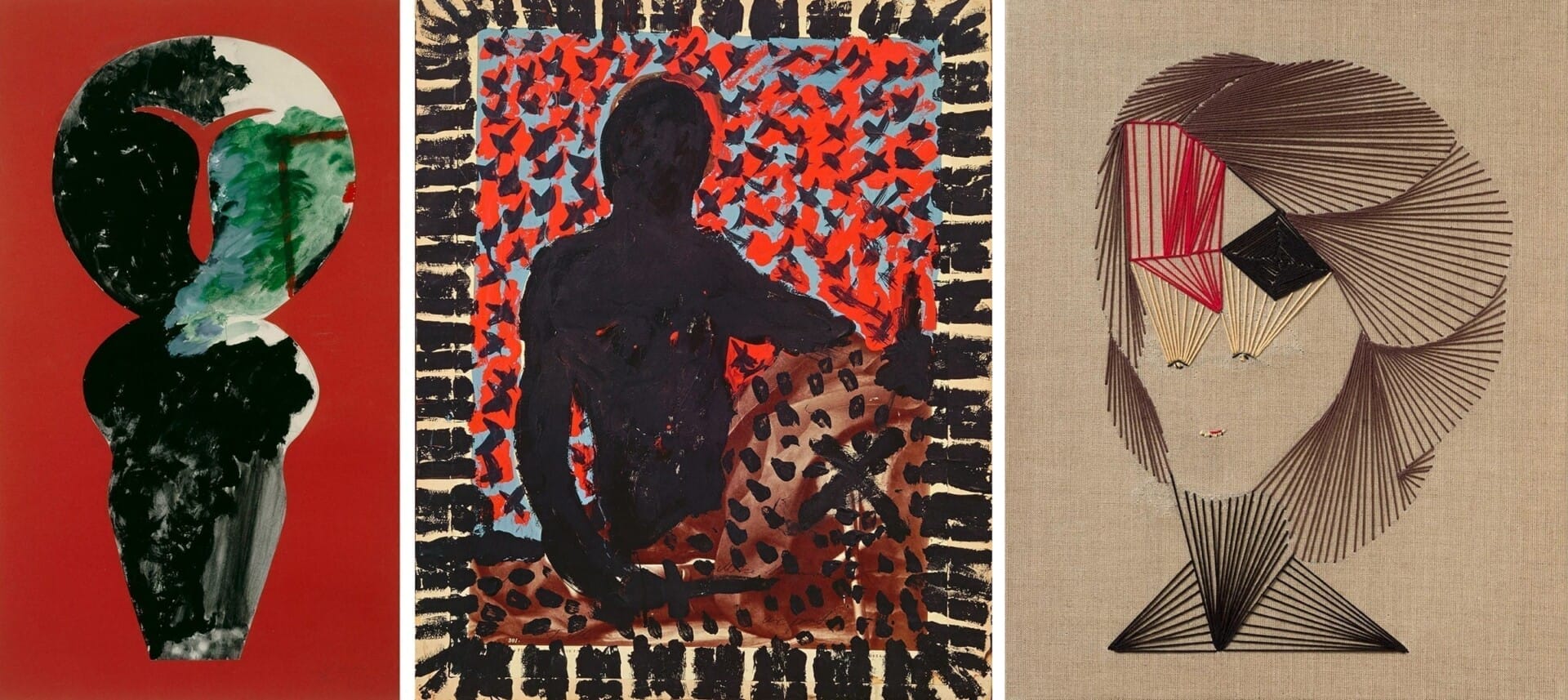Michael Werner Gallery is pleased to present The Human Figure, an online exhibition of works by the artists Jean Arp, A.R. Penck, and Enrico David. Works will be accompanied by historical documents, photographs, and videos to allow viewers to explore each artwork in depth.
From the beginning of time, humans have desired to see themselves reflected in art. The human figure was rendered on cave walls and carved into stones to be carried as totems or idols. Artists, from antiquity to now, have expanded on these early impulses and used the human figure to portray all facets of the human condition. Born in different eras, Arp, A.R. Penck, and David draw on this long history and use the human figure to examine movement, sensuality, and power.
Arp, an early 20th century modern master, migrated between France, Germany, and Switzerland, fleeing two world wars fought between two countries that he called home. A.R. Penck, one of the most important post-war German artists, fled persecution from the authoritarian East German government. David, an Italian artist living and working in London today, has made new work for this exhibition while in quarantine in Berlin. The artists’ migration between countries, and the unstable conditions that caused it, is reflected in the artists’ renderings of the human figure.
Jean Arp was born in 1886 in Strasbourg, a city on the border of Germany and France. He studied in Paris and worked in Munich prior to the start of World War I. When he moved to Zurich to take advantage of Swiss neutrality, Arp became a founding member of Dada, an art movement that believed in natural and irrational order over reason. Through his affiliation with Dada, Arp experimented with chance. Arp was a talented painter and poet, but he is most remembered for his biomorphic sculptures. Chance plays a part in his sculpting process; Arp never started a sculpture with a shape in mind. Instead he allowed intuition to guide him through the sculpting process, creating sensual, biomorphic forms full of movement that are often seen as figurative, playing on the primal desire to see ourselves reflected in art. Jean Arp died in Basel in 1966.
A.R. Penck, the pseudonym of Ralf Winkler, was born in Dresden in 1939. Like Arp, A.R. Penck lived in a time of unrest in Europe. In 1945, he witnessed the firebombing of Dresden, an experience that impacted the course and development of his life and art. As a young man, A.R. Penck was rejected by the academies in East Germany for his political views but continued his career as a self-taught artist. His art was banned from public exhibition in East Germany but was smuggled to the west with the help of Georg Baselitz, Jörg Immendorff, and Michael Werner. His paintings caused a sensation. His first solo museum exhibition occurred at Museum Haus Lange, Krefeld in 1971. He participated in Documenta 5 in 1972. He was awarded the prestigious Will Grohmann Prize of the Academy of Arts in West Berlin in 1975. His success led to further persecution from the East German government. His studio was torn apart in 1979. Eventually his citizenship in East Germany was revoked, and he emigrated to the West in 1980. A.R. Penck was interested in analyzing systems of power in his work, and the human figure is shown prominently in his work as a symbol. When asked by John Yau in 1996 to explain the difference of structural power in the West versus the East, A.R. Penck says, “I am interested in structures and change, not one or the other, but both. Some people believe in systems, but they are blind about the facts. I am interested in movement, rather than something static. That’s what I have been looking at all these years, movement.”
A.R. Penck participated in the groundbreaking exhibitions Zeitgeist (Martin-Gropius-Bau, Berlin, 1982) and New Art (Tate, London, 1983). Numerous solo exhibitions worldwide include Kunsthalle Bern (1975); Van Abbemuseum, Eindhoven (1975); Museum Ludwig, Cologne (1978); Gemeentemuseum, The Hague (1988); The Irish Museum of Modern Art, Dublin (1991); Schirn Kunsthalle, Frankfurt (2007); Musée d’Art Moderne de la Ville de Paris (2008); and Fosun Foundation, Shanghai (2017). The retrospective A.R. Penck: How It Works is currently on view until September 27, 2020 at the Kunstmuseum den Haag. A.R. Penck died in 2017.
Enrico David was born in Ancona, Italy in 1966. Discussing these recent works, David states, “I draw in the hope of illustrating the functioning of this time, and how I function within it.” Unlike Arp who ends with the human figure, David starts with the human figure. From there, artistic innovation takes over. The figures are subject to growths and protrusions; they are encapsulated in undistinguishable forms. Like Arp, sensuality is at play. Drawing on colors and figures of the Weimar artists of the early 20th century, these works draw from the early 20th century history of Berlin.
David’s major solo exhibitions include Ultra Paste, ICA London (2007); Bulbous Marauder, Seattle Art Museum (2008); How Do You Love Dzzzzt by Mammy?, Museum für Gegenwartskunst, Basel (2009); Repertorio Ornamentale, Fondazione Bevilacqua La Masa, Venice (2011); Head Gas, New Museum, New York (2011); UCLA Hammer Museum, Los Angeles (2013); The Hepworth Wakefield (2015); Fault Work, Sharjah Art Foundation, Sharjah, UAE (2016); Gradations of Slow Release, MCA Chicago and Hirshhorn Museum and Sculpture Garden, Washington, DC (2019). In 2013, David presented a major installation of paintings, tapestries and sculptures as part of The Encyclopedic Palace, curated by Massimiliano Gioni for the Venice Biennale. In 2019, David represented Italy as part of Neither Nor: The Challenge to the Labyrinth, curated by Milovan Farronato at the Italian Pavilion for the Venice Biennale.
Viewers can access the viewing room through our Art Basel page starting June 19 at 7am EST until June 26 at 7am EST. Art Basel VIP days are June 17 and 18. Simultaneously, an expanded exhibition will launch the gallery’s online viewing rooms at michaelwerner.com.
